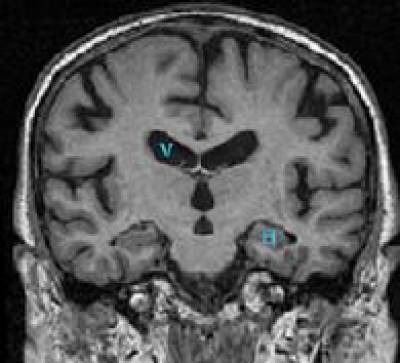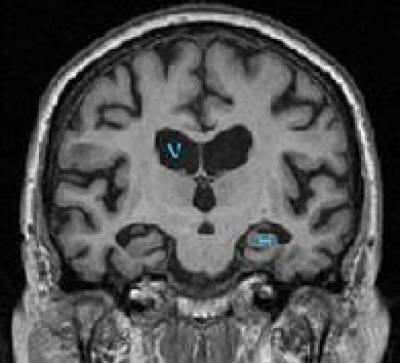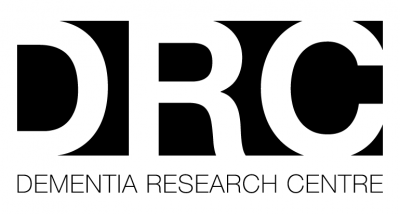
Structural magnetic resonance imaging (MRI) is our most widely used neuroimaging technique. MRI scans allow us to see the effect that dementias such as Alzheimer's disease (AD) are having on the brain. For this reason they can be useful in the diagnosis of disease, which is important if appropriate treatments are to be prescribed. In addition, taking several images from the same individual over a period of time allows us to track the progression of the disease. By determining this natural progression, we are able to assess whether potential new therapies are having any impact on the disease. MRI is being used increasingly in clinical trials.

Individuals with AD have a build-up of toxic elements within their brains, which ultimately causes the death of nerve cells. This can be seen as brain shrinkage, or atrophy. As the nerve cells die, they are replaced with fluid, which appears dark on MRI scans. In the pictures shown, it can be seen that in AD the ventricles (blue 'V') the fluid-filled spaces within the brain, are greatly expanded (bottom right picture) in comparison with the healthy individual (top left picture). In addition, the hippocampus (blue 'H'), a structure of the brain known to be associated with memory, is shrunken in AD (bottom right picture).
 Close
Close


